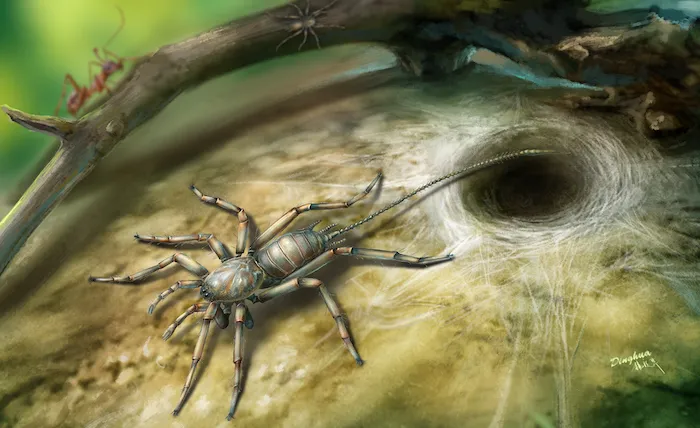Found: 100-Million-Year Old Arachnid with a Tail
The creepy-crawly is unlike any living spider
/https://tf-cmsv2-smithsonianmag-media.s3.amazonaws.com/filer/e3/92/e392617b-5157-49c2-88e6-52c480cecfd1/162067_web.jpg)
In many ways, this 100-million-year-old arachnid looks like a modern day spider. It has eight legs and fangs. It has “spinnerets” located at its read end through which it once produced silk. But as Nicholas St. Fleur reports for the New York Times, the newly discovered arachnid has at least one feature that sets it apart from any living spider: a tail.
The Cretaceous-era critter has been dubbed Chimerarachne yingi, borrowing its name from the Chimera, a mythological creature composed of the parts of several different animals. Two teams of researchers discovered four different C. yingi specimens encased in ancient amber up for sale in Myanmar markets, and recently described their findings in two papers in the journal Nature Ecology & Evolution.
Measuring just 2.5 millimeters, C. yingi would have been smaller than its tail, which stretched to about 3 millimeters. Researchers think C. yingi used its appendage to sense its environment. “Animals that have a long whippy tail tend to have it for sensory purposes,” Paul Selden, a paleontologist at the University of Kansas and a co-author of one of the studies, says in a statement.

When it comes to C. yingi’s other attributes, scientists can only offer educated guesses. Since it was found trapped in amber—the fossilized resin of tree—it seems likely that C. yingi lived in and around trees. It isn’t clear if the arachnid used its spinnerets to weave webs, since arachnids also rely on their spinnerets to wrap eggs, to make sleeping hammocks, and to leave trails that help them find their way back to their burrows.
C. yingi is not a spider, but rather a relative that evolved alongside spiders. Researchers do not entirely agree on how the creepy crawly should be classified, however. One of the research teams believes that C. yingi belongs to the Uraraneida group, an extinct spider relative that had tails. (Unlike modern day spiders, uraraneids had plated bellies and silk-spinning organs on the edges of their plates, rather than near their rear end). The other thinks the arachnid may have been an early branch of modern spiders—“a kind of missing link” between the uraraneids and the spiders we know today, Selden tells Ian Sample of the Guardian.
As Rachel Becker points out for the Verge, further research might clear up some of this uncertainty. If scientists discover, for instance, that C. yingi produced venom, it would make it more likely that the arachnid belonged to the evolutionary lineage of modern spiders. Selden also thinks it’s possible that there are living relatives of C. yingi crawling about in the forests of southeast Asia, unbeknownst to scientists.
“We haven’t found them,” he says in the University of Kansas statement, “but some of these forests aren’t that well-studied, and it’s only a tiny creature.”